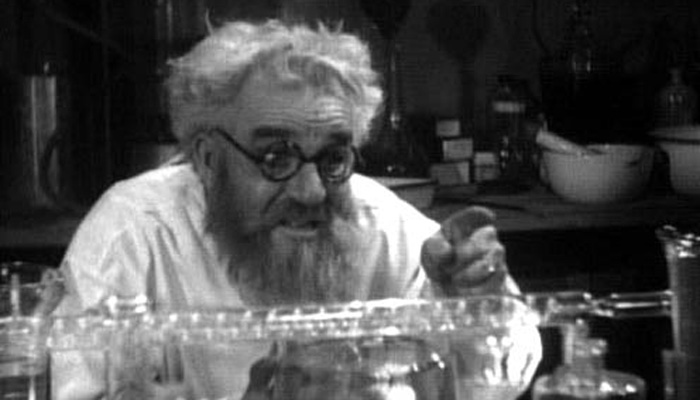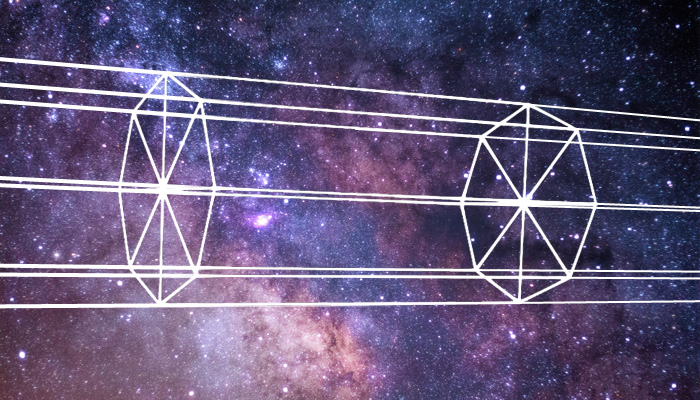Time Travel Expert Dr. Ronald Mallett Predicts A Working Time Machine Will Be Invented Within A Decade
This article is more than seven years old and was last updated in March 2020.
When Will Time Travel Be Invented?
Dr. Ronald Mallett has dedicated his career to answering this question and he believes that building a working time machine will be possible within the next ten years.
Dr. Mallett was a theoretical physicist based out of the University of Connecticut before retiring last year. He specialises in theoretical general relativity and relativistic quantum mechanics, and his primary research relates to the possibility of developing time travel using the gravitational properties of light produced by a device called a ring laser.
If you're interested in the concept of travelling through time and you have a few minutes spare then I recommend watching Dr. Mallett's recent TED Talk in which he explains his theories on time travel and the journey that led him to his field of research.

How To Build A Time Machine
Before embarking on his journey to develop a time machine, Dr. Mallett needed to establish whether time travel was possible and not just the stuff of science fiction. Before we delve into the intricacies of time travel, it's important that we understand the basics of quantum mechanics and relativity.
To get back to the rules which govern time travel we need to travel back to 1905 when Albert Einstein published his special theory of relativity, which for the first time showed that time is not a constant and that it is intrinsically linked to space, he also calculated that time could be manipulated.

Photo: en.wikipedia.org
Essentially, Einstein theorised that time is affected by speed. The faster an object moves, the more time slows down for that object.
In 1971, a famous experiment known as the "Hafele–Keating Experiment" proved this principle. Joseph Hafele and Richard Keating placed four atomic clocks on passenger jets and flew them around the world, they also left a set of identical clocks at the United States Naval Observatory. When the clocks landed they were compared to those on the ground and as special relativity predicts, the clocks from the plane were slow.
The planes flew at close to the speed of sound, which may seem pretty fast but this only resulted in a difference of a tiny fraction of a nanosecond but remember, the faster an object moves, the more time slows down for the object.
It means that if you flew around world several times at close to the speed of light, the journey may only take a few seconds for you but when you land on Earth years could have passed. You have travelled into the future.
So, we know that time travel is possible but only in to the future, no matter how fast you travel, you can't go into the past. The concept of moving backwards through time is fraught with difficulties.
Advertisement ‐ Content Continues Below.
Bending The Space-Time Continuum

Photo: © Mysid
To tackle the problem of travelling into the past, Dr. Mallett has been working in line with some principles which were outlined by Einstein's second theory. Einstein's general theory of relativity was published in 1916 and it made us question what Isaac Newton had taught us about gravity.
Einstein's gravitational field equations proved that gravity isn't a force between two object as we previously thought, but it's a property of space. Objects in the universe such as Earth and our Sun warp space.
In 1919 this effect was observed for the first time by the English astronomer, physicist, and mathematician Arthur Eddington. He measured a displacement in the light from stars in the constellation Taurus as they passed behind the Sun during a total solar eclipse.
According to Einstein's equations space and time were linked, so if the gravitational effect of a start could wrap space, then it must also be bending time.
It's called "gravitational time dilation" and works in a similar way to the example of clocks in planes. However in this case, if a clock is situated close to a gravitating mass time will move slower than it would for a clock further away from the mass.
The effect can be observed with our own GPS satellite network. A clock in your car's GPS device moves slower here in the gravity well of Earth compare to those on the satellites orbiting high above Earth. In fact, the satellites have to be calibrated to allow for this discrepancy.
"It was actually Einstein's general theory of relativity that lead to my ideas because in Newton's theory the only thing that could create gravity is matter. In Einstein's theory not only can matter create gravity, but light itself can create gravity."
Dr. Ronald Mallett
So, we know we can affect time with gravity but according to the Newtonian model of gravity the only thing that can create gravity is an object with mass, right?
Well, that's what Sir Issac Newton thought, but Einstein took that a step further. Light is made up of packets of energy called photons and, although photons have zero mass, they are a source of gravitation and just like matter contribute to the curvature and warping of space.
This now leads us to the basis of Dr. Mallett's experiments. Light can bend time.

In his experiments, Ronald Mallett used a device called a "ring laser" to produce a circular beam of light. It's a fairly simple piece of kit, a laser is shone into the ring through a half-silvered mirror, it then bounces off of three other mirrors to produce a continuous, unending beam of laser light.
Dr. Mallett says that according to his calculation, something "really interesting" happens to the space inside the ring, it starts to get bent and distorted by the light.
You may be wondering how we can know if empty space is being moved around, Dr. Mallett explain, "if you put a neutron in the space, then you turn on the circulating light beam, as the space is being dragged around, it will drag the neutron around. So even though you can't see the space directly, you can see the neutron being dragged around."
So if space is being bent within this device then we know that time must be too, as the two are linked. Dr. Mallett speculates that with enough power, a similar laser device could bend time to a point where it becomes a loop.

The researcher goes on to explain that if we were to transport ourselves back in time by even a few minutes we'd find ourselves in the past but stranded in deep space, this is because Earth is orbiting the sun at about 30km per second. Our sun is also moving within our galaxy and in turn, our galaxy is spinning within the universe as a whole.
However, he claims that by bending space in this way, the time loops will spiral through time and space like a slinky, we could then follow this path back to the same relative point on Earth at the exact time that the device was switched on.
Although Dr. Mallett says time travel using this method is only just out of our reach, he doesn't think we'll be sending humans or spacecraft back in time using his technique any time soon, but it could be used to send data in the form of binary code.
The Connecticut professor believes that his device could be made to change the orientation of a neutron, spinning it either upward or down, this could be used to signal a '0' or a '1'. A receiver in the past could then be used to detect the neutrons and decode a message from the future.
He says the device could be used to pre-warn civilisation about a natural disaster or similar event but currently its biggest obstacle is funding. At the time of writing this article, Ron Mallett still hasn't been able to create a full scale version of his device but the doctor has admitted that to distort space-time to the necessary degree would require a "huge amount of energy, like stellar quantities" and that could be a leap too far.
Advertisement ‐ Content Continues Below.
The Mad Scientist Paradox

Photo: © Roadshow Attractions
You might have realised there's a major limitation with Dr. Mallett's device. Whether it's people, a spacecraft or just data, nothing can be sent back to a point before the device was switched on, Mallett's time machine creates a closed time loop.
However, this isn't the biggest problem with Dr. Mallett's theory. The biggest problem is that travelling back in time creates a paradox, also known as a causality loop.
Theoretical physicist and cosmologist, Stephen Hawking uses an example he calls "the Mad Scientist paradox."
He tells the tale of a mad scientist who "is determined to create a paradox, even if it costs him his life." The scientist travels back in time, just one minute, "the scientist can see himself as he was one minute ago," but Professor Hawking questions what would happen if the scientist pulled out a gun and shot his earlier self.
Stephen explains, "he's now dead. So who fired the shot? It's a paradox. It just doesn't make sense. It's the sort of situation that gives cosmologists nightmares."
Stephen Hawking wrote a paper in 1992 entitled 'The Chronology Protection Conjecture' which deals with this very problem.
"Any kind of time travel to the past through wormholes or any other method is probably impossible, otherwise paradoxes would occur."
Stephen Hawking
Dr. Mallett does have a potential work around for this however, which does conform to other scientists' understanding of the universe, including the American physicist Hugh Everett III, who in 1957 proposed his "many-worlds interpretation."
The many-worlds interpretation states that all possible alternate histories and futures are real and each is happening simultaneously in a different parallel universe. Basically, everything that could possibly have happened, has happened in the past of some other universe.
The concept of a multiverse allows the mad scientist to shoot himself without creating a paradox or breaking causality. At the moment he travels back in time and comes face-to-face with himself a new timeline is created, a new universe branches out into the future. In one universe the scientist is shot dead, in the other the scientist lives on having killed an alternate version of himself.
But Stephen Hawking isn't convinced, according to him, time machines which allow someone to travel back in time "violate a fundamental rule that governs the entire universe," these time machines breaks causality, the principle that cause happens before effect and never the other way around.
Professor Hawking believes that "things can't make themselves impossible," by this he means the universe can't back itself into a corner. He says "I think something will always happen that prevents the paradox. Somehow there must be a reason why our scientist will never find himself in a situation where he could shoot himself."
OUTATIME
Professor Hawking may be right, Dr. Mallett's device might be destine to fail, for one thing, everyone knows a time machine needs some sort of vehicle, a vessel or mode of transport and that seems to be the one thing missing from his theories.
A lot of Dr. Mallett's work is documented online and due his bold claims he's been featured on several television show where he's talked about his theories. In everything I've seen of Mallett's work, he seems to be able to demonstrate how he can create a spiral of distortion through space and time leading to an exact historical and spacial point in the past, but he never seems to discuss the actual mechanics of following that path back in time.
Surely for his time machine to work there needs to be a way to propel a human or a vessel along this path, stopping either at its source, the point where the device was turned on, or a point along the way. Even Mallett's first steps, the plan to send binary coded neutrons back along the path, what mechanic will allow these subatomic particles to traverse that path?
Dr. Mallett has written a book on the subject, 'Time Traveler: A Scientist's Personal Mission to Make Time Travel a Reality', so perhaps he goes into more details about the mechanics of time travel in this publication or perhaps the mode of transport is the same as that of the Tipler cylinder.
Advertisement ‐ Content Continues Below.
Tipler Cylinder And Closed Time-like Curves

Luckily Dr. Mallett's vision for time travel isn't our only possible option for travelling into the past, the option which currently has the strongest scientific following is the theory of the Tipler cylinder.
Just like Dr. Mallett's ring laser, the Tipler cylinder warps space-time but in a much more predictable and controlled manner and creates what's known as "closed time-like curves." Scientists seem to agree that by flying a spacecraft in the appropriate direction along one of these time curves you would be able travel backwards through time.
However, constructing a Tipler cylinder is kind of tricky. In 1974, Frank Tipler proposed that if you take an object ten times the mass of the sun, compress it into an infinitely long cylinder and then make it rotate along its longitudinal axis billions of times a minute.
It seems a Tipler cylinder is just as impractical as Ronald Mallett's device which he says requires "stellar quantities" of energy to get it up to speed, by that he literally means an amount of energy equivalent to that of a star.
The Verdrehung Fan

Photo: pixabay.com
Ronald Mallett certainly caught the world's attention with his claims of a time machine, perhaps because of this backstory. His journey into theoretical psychics and time travel came as a result of his father's untimely death. As a boy Ronald dreamt of travelling back in time to save his father's life. The story was picked up by the media making Dr. Mallett's time travel research all the more inspiring but he isn't the only scientist racing to build the world's first time machine.
Ronald's arch enemy is Marshall Barnes, an inventor and self-proclaimed research and development engineer who claims to have made a breakthrough in time travel with his time machine that he calls the "Verdrehung Fan," he claims it can send video and radio signals back in time.
His device, which looks like a normal table-top fan, works by combining the "known effects of torsion physics" with the "speculated behaviour of micro wormholes" resulting in the elongation and prevention of immediate collapse of the wormholes.
Here it is! The machine that sends photons out of our space-time - Der Verdrehung Fan - pic.twitter.com/BCNqqKmXtn
— Paranovation Blog (@Paranovation) October 29, 2015
He claims that the fan is contained within a specially synthesised electromagnetic field, which is generated by his device called a Space-Time Dilator Transport System (STDTS) that connects to the metal surrounding of the fan.
The "special field" contracts and twists the space in front of the fan, the blades of the fan carry the same EM field and due to the fact they're moving at high speeds, torsion distortion is being applied to the space which results in opening of micro wormholes. Marshall claims that these wormholes can be detected as radio waves that would normally pass through the fan disappear into the wormholes once the device has been activated.
Although Marshall claims his time machine has already sent information back in time, very little proof has been published. For example, how does Marshall know where any of these micro wormholes lead? What proof does he have that micro wormholes are even forming?
In the demonstration of the device I watched online, Marshall conducted a very unscientific experiment in which he tried to operate a television placed behind the fan using an infrared remote control. He concluded that because the television doesn't turn on while the remote is pointed at the fan, the IR signal must be being swallowed up by micro wormholes.
Of course, another conclusion could be that a TV remote doesn't work through a solid, metal fan but perhaps he'll prove us wrong. Marshall believes that with an increase in size and power, his device could create a stable, traversable wormhole. The inventor says that work on a larger scale Verdrehung Fan could start as soon as late summer 2017.
Related Content
Daily Horoscopes
You May Also Like

























